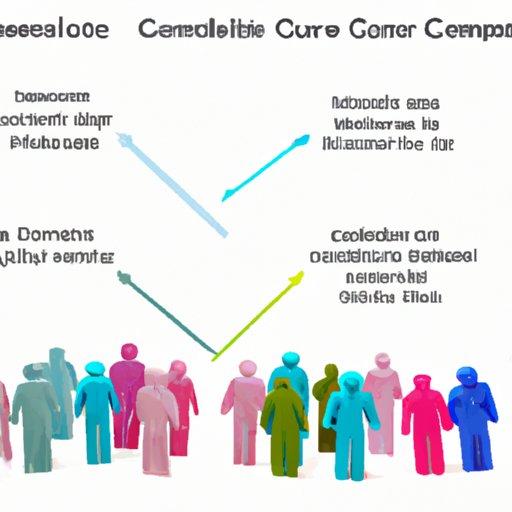Introduction
Community home based care is a model of healthcare delivery that seeks to provide quality care in the comfort of a patient’s own home. This approach has become increasingly popular in recent years as an alternative to traditional institutional care. In this article, we will explore the benefits and challenges of community home based care, understand its role in healthcare, and compare and contrast different models of care.
Exploring the Benefits of Community Home Based Care
The primary benefit of community home based care is improved access to healthcare. By providing care in the home, patients are able to receive timely medical attention without having to travel to a clinic or hospital. Additionally, community home based care can help increase a patient’s independence and quality of life by allowing them to remain in their own home rather than in a nursing facility. Finally, community home based care can be more cost-effective than traditional institutional care, as it eliminates the need for expensive and often unnecessary hospitalizations.

Understanding the Role of Community Home Based Care in Healthcare
Community home based care plays an important role in providing access to primary care services. By providing preventative care in the home, patients can receive timely treatment for chronic conditions, such as diabetes and hypertension, which can help reduce the risk of complications. Additionally, community home based care can improve treatment compliance, as patients are more likely to adhere to prescribed treatments when they are conveniently located in their own home. Finally, community home based care can help increase coordination of care by providing a single point of contact for multiple providers.
Examining the Challenges Faced by Providers of Community Home Based Care
Despite the many benefits of community home based care, there are several challenges faced by providers. One of the most common challenges is limited resources for patients. Many patients lack the financial means to pay for home health care services, making it difficult for providers to ensure that all patients receive the care they need. Additionally, it can be difficult to find qualified providers to deliver community home based care, especially in rural areas. Finally, there is the potential for overburdening caregivers, as they may be tasked with providing care for multiple family members.

Comparing and Contrasting Different Models of Community Home Based Care
There are several different models of community home based care, each of which offers unique advantages and disadvantages. The professional home health care model is typically provided by nurses, therapists, and social workers who are employed by agencies. This model is beneficial because it provides specialized care, but it can be expensive and may not be covered by insurance. The family-centered care model involves family members providing care for their loved ones. This model is beneficial because it allows for personalized care, but it can be difficult to manage if family members are unable to provide the necessary care. Finally, the technology-assisted care model utilizes technology to provide remote monitoring and support. This model is beneficial because it allows for efficient monitoring of a patient’s health, but it can be costly and may not be feasible for some patients.

Analyzing the Impact of Community Home Based Care on Quality of Life
Community home based care can have a positive impact on quality of life. For patients, it can provide improved comfort and convenience while receiving care. Additionally, it can provide emotional support for family members, as they are able to spend more time with their loved one. Finally, it can enhance social connections, as patients are more likely to interact with others in their own home rather than in a hospital setting.
Conclusion
In conclusion, community home based care can provide numerous benefits, including improved access to healthcare, increased independence and quality of life, and reduced cost of care. However, there are also a number of challenges faced by providers, including limited resources for patients, difficulty finding qualified providers, and potential for overburdening caregivers. Furthermore, there are several different models of community home based care, each of which offers unique advantages and disadvantages. Finally, community home based care can have a positive impact on quality of life for both patients and their families. Further research is needed to better understand the benefits and challenges of community home based care and to identify strategies for addressing these issues.
(Note: Is this article not meeting your expectations? Do you have knowledge or insights to share? Unlock new opportunities and expand your reach by joining our authors team. Click Registration to join us and share your expertise with our readers.)
